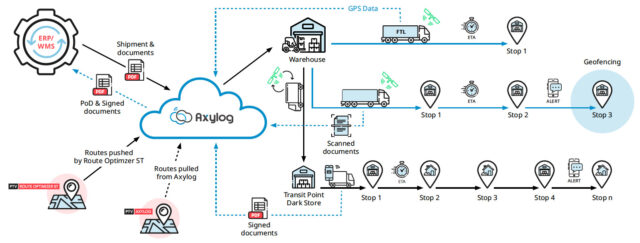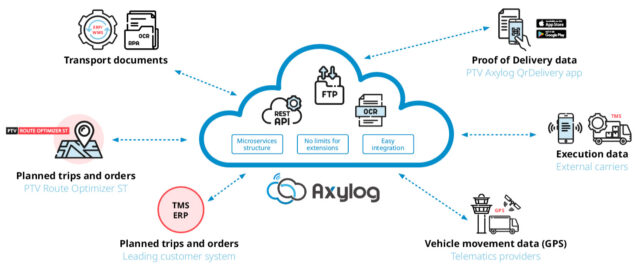Having real-time visibility across all your transport operations is crucial for any modern logistics company to ensure efficient and reliable processes and good customer service. As the logistics landscape becomes increasingly complex, making sure that everyone involved in your transport supply chain is aware of what is going on at any given time requires more than simple tracking and manual processes. It needs connectivity between all stakeholders, automation of processes, and centralized data management that allows you to analyze instantly for quick decision-making. So, if you’re still relying on emails and physical paperwork, it might be time to consider switching to a real-time transport visibility platform.
What is a real-time transport visibility platform?
A real-time transport visibility platform provides you with live updates about the status and location of your trucks and shipments. It offers a means of tracking and monitoring deliveries as they happen so that you can respond to any potential incidents or anomalies quickly and act to reduce their impact on the schedule and the broader network.
How does it work?
Real-time visibility platforms use technology, such as GPS, sensors, and electronic proof of delivery (ePOD) software, to collect data from across the transport supply chain and store it in a centralized system. AI and machine learning (ML) are used to analyze this data and provide accurate ETAs. They can also provide real-time insights, based on live data such as traffic updates and speed restrictions, that planners can use to make routing decisions. These insights are made accessible to users via alerts, reports, and customizable dashboards.
How are companies using real-time transport visibility platforms?
All types of companies, including transport and logistics companies, retailers and manufacturers, are using this type of technology to have better visibility of their transport operations, and to make better and targeted decisions around deliveries.
For example, one of Italy’s biggest supermarket chains, Codè Crai Ovest, uses the transport visibility platform PTV Axylog to get a real-time overview of the availability of vehicles, the restrictions in the areas where they deliver goods, and any other variables. According to their logistics director, Giuseppe Mariella “Our control room knows exactly where every single vehicle in the fleet is located.” Additionally, they have also managed to digitize and automate many of their processes and provide better customer service by reducing delays and providing transparency around delivery times.
Poultry specialist, Fileni, also uses PTV Axylog to for real-time visibility over their operations. For them, pre-empting delays and disruptions is crucial as they work with very tight lead times of no more than 16 hours. Since introducing this technology, they have managed to improve collaboration with partners and carriers, standardise processes and increase service levels which has resulted in better customer service.
According to Logistics Director, Andrea Ceccantini, “Since we have started using PTV Axylog, we have a greater awareness of our strength, as well as of areas of weakness where we need to focus our energies towards improvement. Furthermore, the immediate availability of information enables us to respond more accurately and promptly to customer and sales force requests.”
Choosing the right technology provider
As the demand for better visibility and real-time insight into transport operations has increased, so too has the number of providers of this type of technology. So how do you know which one is right for your business?
Aside from cost, there are a few things to consider when choosing a real-time visibility platform. Firstly, what features does it need to have, and how customizable is the system to support your individual transport and information processes. For example, data sharing capabilities, transport orders down to individual units, events, and alerts, driver applications to support proof of delivery, digital documentation, etc. Secondly, you need to consider how easy it is to integrate into your existing systems, such as WMS, TMS, and ERP as well as with your or your subcontractors’ telematics providers.
Mobile application as well as central platform application need to be easy to use – the UI needs to be intuitive and provide you with all the relevant information for your operation and control. In addition to all operational management and control you might need advanced analytics that can help you with strategic decision making.
To serve your operation now but also your future growth, the system needs to be able to scale parallel to your changing needs and business growth. Last but not least, you should also look at the reputation of the vendor. As mentioned, the number of technology providers has grown rapidly in recent years, so it’s worth focusing on companies that have experience in the space and a successful track record of delivering results.



